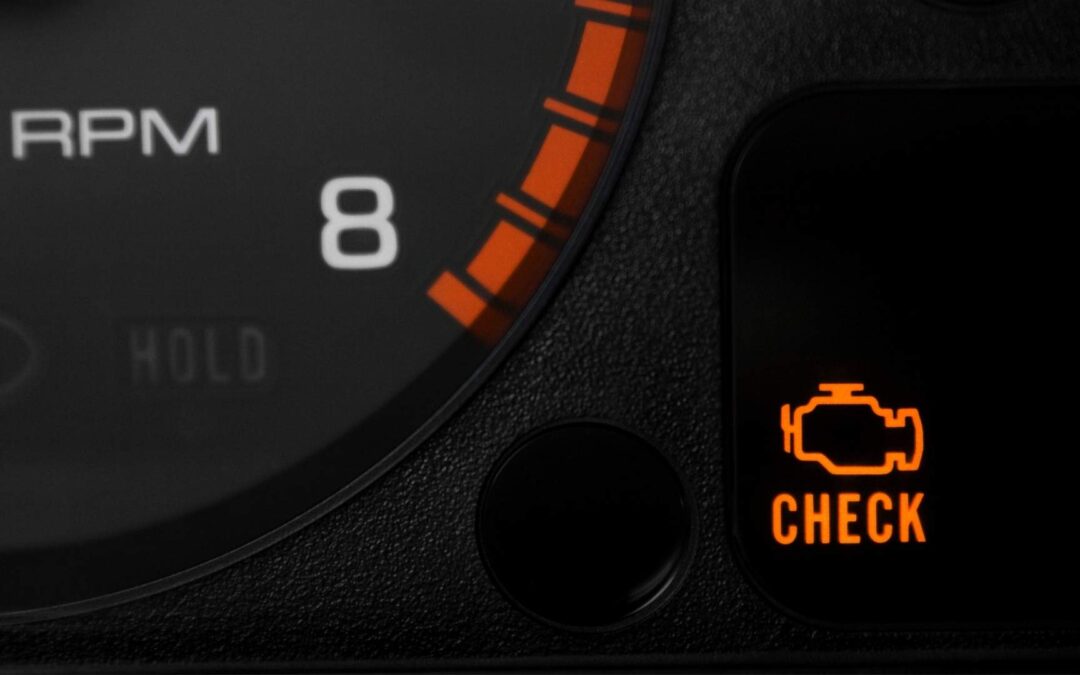The check engine light is one of the most common—and often the most dreaded—indicators on your vehicle’s dashboard. While it can sometimes signal a minor issue, it’s essential not to ignore it. This little light serves as your car’s way of telling you something isn’t right. Let’s break down what it means, why it turns on, and what steps you should take when it does.
Why Does the Check Engine Light Turn On?
The check engine light (often shaped like an engine or labeled “CHECK ENGINE”) is part of your car’s onboard diagnostics system (OBD). When it lights up, your car’s computer has detected a problem that affects your vehicle’s performance, emissions, or safety.
Here are some of the most common reasons it might illuminate:
- Loose or Damaged Gas Cap
- One of the simplest and most overlooked reasons is a loose gas cap. The gas cap maintains pressure in the fuel system and prevents fuel vapors from escaping. If it’s not sealed correctly, your check engine light may turn on.
- Faulty Oxygen Sensor
- Your oxygen sensor monitors the amount of unburned oxygen in your exhaust system. If it malfunctions, your car may consume more fuel than necessary and emit more pollutants.
- Malfunctioning Spark Plugs or Ignition Coils
- These components are essential for starting and running your engine smoothly. If they fail, it can lead to misfires, reduced fuel efficiency, or even engine damage.
- Failing Catalytic Converter
- The catalytic converter helps reduce harmful emissions. A failing converter can affect your car’s performance and fuel efficiency.
- Mass Airflow Sensor Issues
- This sensor measures the amount of air entering your engine to determine the proper fuel-air mix. A faulty mass airflow sensor can cause poor performance and decreased fuel economy.
What Should You Do When the Light Comes On?
When your check engine light illuminates, don’t panic. Here’s what you should do:
- Check for Obvious Issues
- Start by tightening your gas cap. This quick fix can often resolve the problem. If the light remains on after a few drives, the issue likely lies elsewhere.
- Observe the Light’s Behavior
- If the light is steady, it usually indicates a non-urgent issue that still requires attention. However, if it’s flashing, it signals a more serious problem—such as an engine misfire—that requires immediate action.
- Listen to Your Vehicle
- Are there unusual sounds, reduced performance, or vibrations? These could provide additional clues about the issue.
- Schedule a Diagnostic Test
- Bring your car to an auto repair professional. They’ll use a diagnostic tool to read the OBD-II codes, which provide specific information about the problem.
Why You Shouldn’t Ignore It
Ignoring the check engine light can lead to costly repairs down the road. Even if your car seems to be running fine, small problems can worsen over time. For example:
- A faulty oxygen sensor can cause long-term damage to your catalytic converter.
- Ignoring a misfire can lead to engine damage.
Prompt attention can save you money and ensure your vehicle remains safe and reliable.
Conclusion
Your check engine light is more than just an annoying dashboard indicator—it’s your car’s way of keeping you informed about potential issues. While the cause may range from a loose gas cap to a more serious mechanical problem, addressing it promptly can save you from costly repairs and unsafe driving conditions.
When your check engine light comes on, don’t wait—schedule an inspection with a trusted auto repair shop to get your vehicle back in top shape. A little attention now can prevent major headaches later!

Bob Ventura
Author
Bob Ventura is a seasoned author with a passion for helping homeowners take better care of their properties through practical, easy-to-understand content. With years of experience writing about home maintenance, Bob specializes in breaking down complex repair and upkeep tasks into simple, actionable steps that readers can confidently follow. His work covers everything from seasonal checklists and preventative care to troubleshooting common issues and improving energy efficiency.


Recent Comments